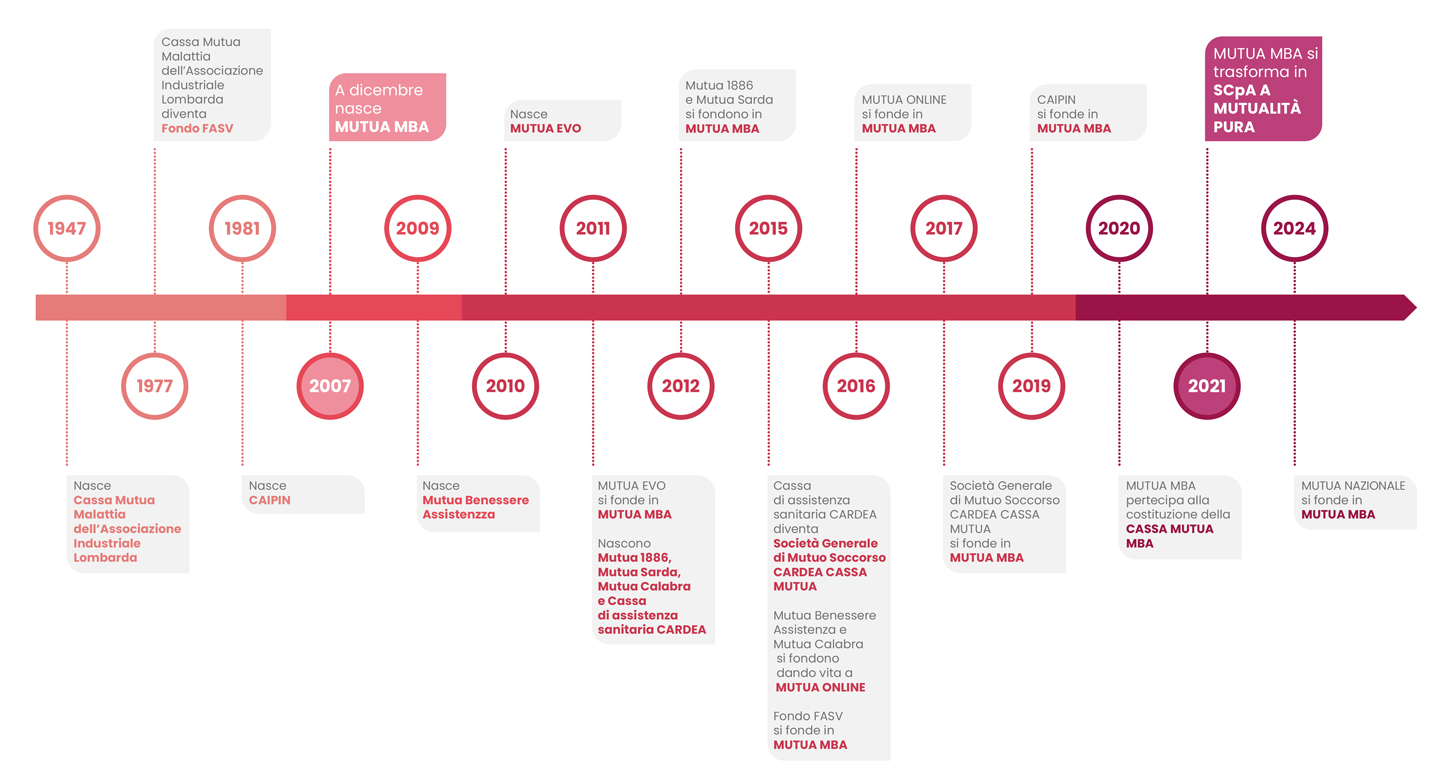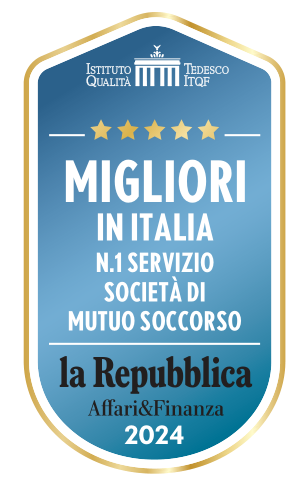THE EVOLUTION OF SOCIETY
History of Mutual Aid
Enhance the history of mutual aid societies, safeguard the assets provided and promote the theme of mutuality and health prevention.
The history of mutual aid societies in Italy
Verso la fine degli anni Cinquanta le Società di Mutuo Soccorso iniziarono un nuovo periodo di espansione in cui furono introdotte maggiori tutele per i lavoratori, tra cui le pensioni e la protezione in ambito sanitario. I lavoratori autonomi e i professionisti invece ancora non godevano di questi maggiori diritti, per cui l’attenzione delle Società di Mutuo Soccorso si rivolse verso di loro, introducendo il concetto di assistenza sanitaria integrativa.
In the the early 1900s the birth of the “Italian Federation of Mutual Aid Societies” took place with the main objective of affirming workers’ rights, improving their social conditions pthrough social security. Only in the fascist period was the Federation dissolved to be rebuilt in 1948 with the name of the Italian Mutuality Federation.
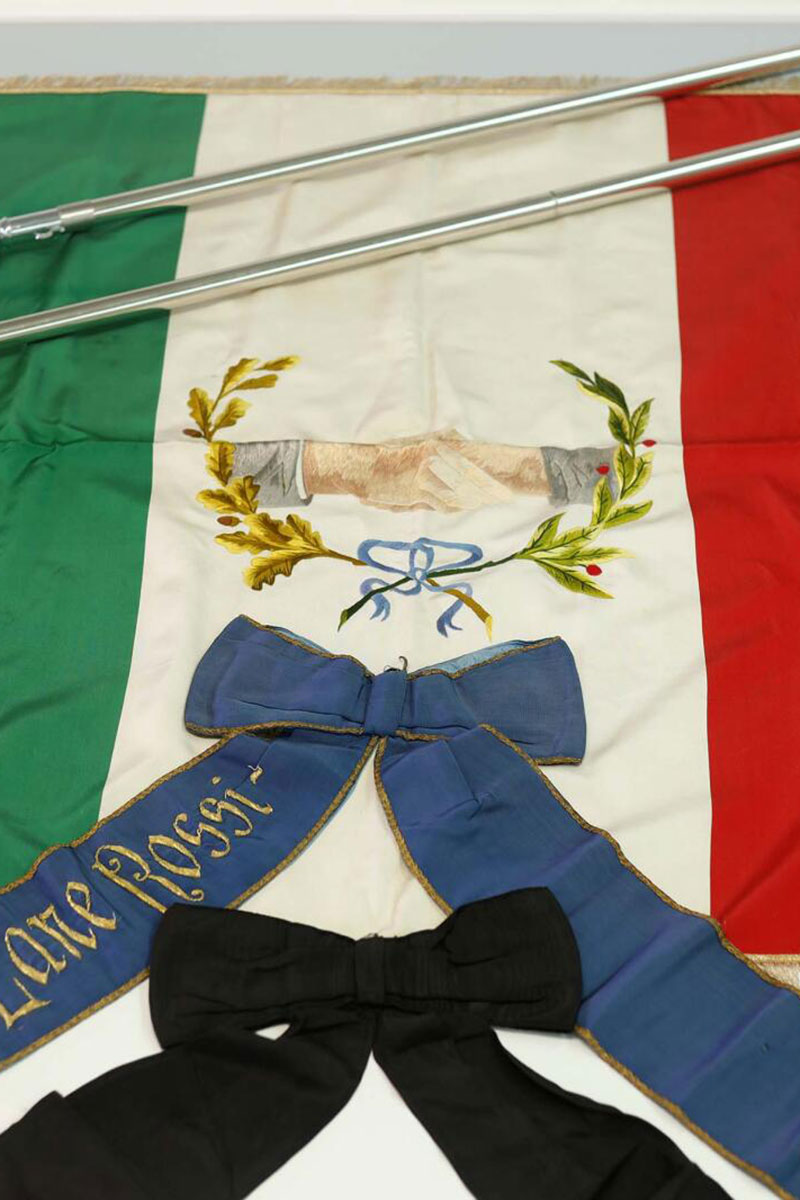
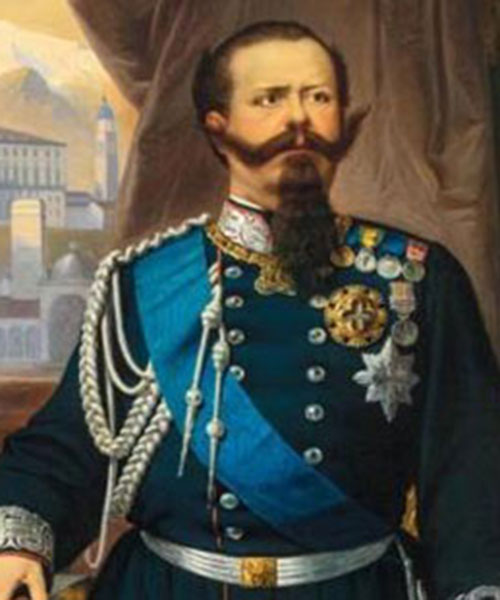
Mutual aid societies yesterday and today
Today’s collection, thanks to continuous recovery and protection activities, is made up of numerous testimonies on the history of mutuality, attributable to over two hundred mutual aid organizations and societies, with offices in Italy and abroad.
1844
Mazzini
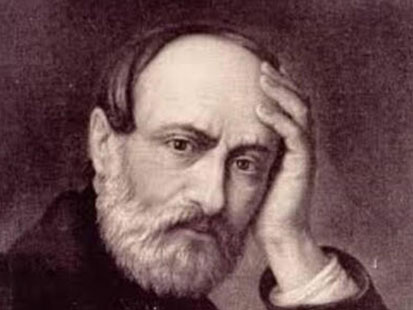
The dissolution provision of the ancient guilds of arts and crafts was issued, which gave the impetus to the dissemination of the phenomenon of mutualism.
Mazzini incited the Italians to unite "among people of the same trade to give life to courageous cooperatives", recommending to make sure and " tax themselves even a modest amount to create welfare funds and assistance".
Starting from 1848 there was a rapid expansion of mutual aid societies in the Kingdom of Savoy (Liguria, Piedmont and Sardinia) but with different territorial characteristics.
Mazzini incited the Italians to unite "among people of the same trade to give life to courageous cooperatives", recommending to make sure and " tax themselves even a modest amount to create welfare funds and assistance".
Starting from 1848 there was a rapid expansion of mutual aid societies in the Kingdom of Savoy (Liguria, Piedmont and Sardinia) but with different territorial characteristics.
1848
The Albertine Statute
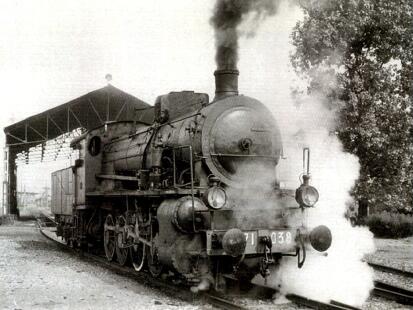
With industrialization the "factory system" spread in which masses of workers were forced into a difficult condition of social and civil life.
Article 32 of the Albertino statute meant an important step towards freedom of association, recognizing "the right to assemble peacefully and conforming to the laws that can regulate its exercise of public affairs".
This was a decisive step for the defense of health as it established that "the Republic protects health as a fundamental right of the individual and interest of the community, and guarantees free treatment to destitute".
Article 32 of the Albertino statute meant an important step towards freedom of association, recognizing "the right to assemble peacefully and conforming to the laws that can regulate its exercise of public affairs".
This was a decisive step for the defense of health as it established that "the Republic protects health as a fundamental right of the individual and interest of the community, and guarantees free treatment to destitute".
1861 - 1870
Vittorio Emanuele II
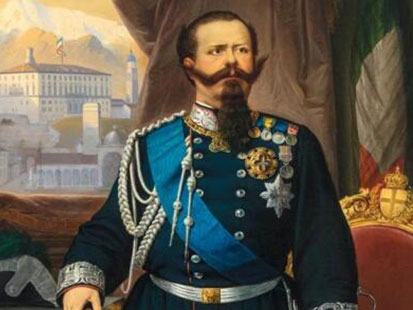
The first convocation of the Italian Parliament took place on 18 February. On March 17, Vittorio Emanuele II was proclaimed king of Italy. The liberal political forces, led by Garibaldi and Mazzini, strongly believed in a unitary and free state believing that its realization could not ignore overcoming the social inequity that affected the working class and supporting the approach of the proletariat to the bourgeois class without class struggles.
Mutualism became increasingly the subject of political interest. The Artisan Brotherhood immediately established itself as the most important "workers" association of the new State, both in terms of number of members and political ideas.
In the first statistic carried out by the ministerial offices, 443 mutual aid societies were registered for a total of 121,635 members.
1870
With the capture of Rome, Lazio is annexed to the Kingdom and the State of the Church is incorporated.
Mutualism became increasingly the subject of political interest. The Artisan Brotherhood immediately established itself as the most important "workers" association of the new State, both in terms of number of members and political ideas.
In the first statistic carried out by the ministerial offices, 443 mutual aid societies were registered for a total of 121,635 members.
1870
With the capture of Rome, Lazio is annexed to the Kingdom and the State of the Church is incorporated.
1871 - 1876
Resistance Society
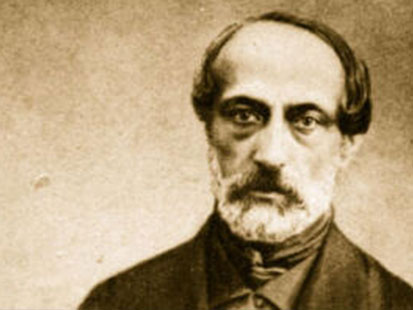
The XII National Congress in Rome saw little participation from mutualistic associations, particularly those of moderate or internationalist inspiration. During the congress the Brotherhood Pact was approved which, according to Mazzini, was to replace the premise for the attack on the monarchical state, but which in fact sanctioned the rupture between the workers' movement and Mazzini .
In 1874 the congress of Mutual Aid Societies of Rome proposed the establishment of the Resistance Societies, structured organizations of mutual aid societies capable of assisting >, defend and promote the workers' struggle.
The mutual aid societies began to abstain from participation in political life, concentrating only on the social functions and the management of the assets of which they were custodians.
In 1874 the congress of Mutual Aid Societies of Rome proposed the establishment of the Resistance Societies, structured organizations of mutual aid societies capable of assisting >, defend and promote the workers' struggle.
The mutual aid societies began to abstain from participation in political life, concentrating only on the social functions and the management of the assets of which they were custodians.
1882 - 1885
New Commercial Code
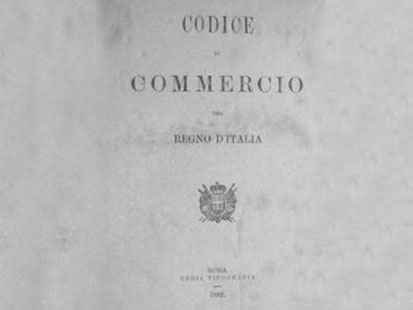
In this period many mutual aid societies transformed themselves into a cooperative, developing in the credit sector in an autonomous organization, to increase and educate workers to save.
With the New Commercial Code they were legalized and transformed into cooperative banks for deposits and loans. They represented an instrument of economic emancipation of workers. The first forms of cooperation for consumption and construction of public housing spread.
With the New Commercial Code they were legalized and transformed into cooperative banks for deposits and loans. They represented an instrument of economic emancipation of workers. The first forms of cooperation for consumption and construction of public housing spread.
1886 - 1892
Berti Law
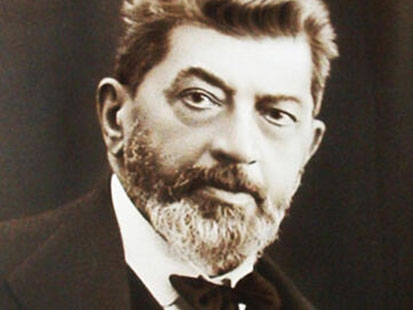
With the Royal Decree the principle of freedom of association was established, Italian legislation had remained extremely vague on the matter, leaving ample freedom of self-regulation to individual mutual aid societies.
The Berti law of 1896 was the first legislative intervention in the field of mutual aid.
The companies were granted the possibility of acquiring legal personality. Furthermore, the essential conditions which he would have to comply with were dictated:
- helping members as an aim
- saving as a means
- mutuality as a bond
The Berti law of 1896 was the first legislative intervention in the field of mutual aid.
The companies were granted the possibility of acquiring legal personality. Furthermore, the essential conditions which he would have to comply with were dictated:
- helping members as an aim
- saving as a means
- mutuality as a bond
1897 - 1900
Provident Fund
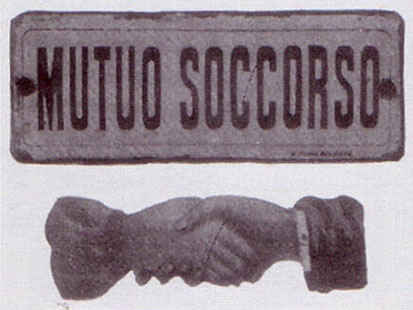
Mutual aid companies were invited to enroll their members in the National Welfare Fund, effectively making membership compulsory for some types of workers.
In 1898 the 17 March law established compulsory insurance against accidents at work for industrial workers. With the law of April 20th the National Welfare Fund for the old age and invalidity of workers was born with an endowment of 10,000,000 lire, it was based on voluntary membership with free contributions and few advantages offered.
In 1900, between 29 and 30 June, the National Social Security Congress between mutual aid societies was held in Milan. Under the impetus of the League of Cooperatives, the theme of a common organization capable of promoting the world's requests for mutual aid was tackled.
On September 5, the Italian Federation of Mutual Aid Societies was born.
In 1898 the 17 March law established compulsory insurance against accidents at work for industrial workers. With the law of April 20th the National Welfare Fund for the old age and invalidity of workers was born with an endowment of 10,000,000 lire, it was based on voluntary membership with free contributions and few advantages offered.
In 1900, between 29 and 30 June, the National Social Security Congress between mutual aid societies was held in Milan. Under the impetus of the League of Cooperatives, the theme of a common organization capable of promoting the world's requests for mutual aid was tackled.
On September 5, the Italian Federation of Mutual Aid Societies was born.
1901 - 1919
Giovanni Giolitti
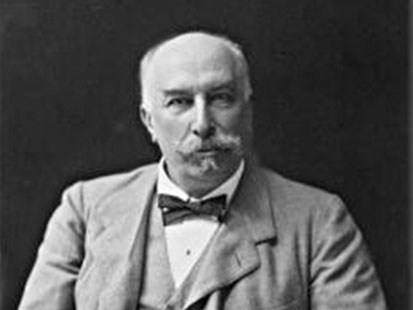
In 1904, the mutual aid societies registered were 6535, a slight decrease compared to the previous revelation.
In 1912, among the measures undertaken by Giolitti in those years (Universal Suffrage and war in Turkey) there was also the foundation of the National Insurance Institute.
At the outbreak of the First World War, the workers' societies were involved in the work of assistance to citizens, soldiers and their families. Most mutual aid societies exhausted their reserve funds also due to the decrease in the number of members.
At the end of the world war there was a strong economic crisis, 1800 strikes were registered and disability and old age insurance became mandatory. With the equal contributions of entrepreneurs, workers and the assistance of the State, welfare was extended to the entire population.
In 1912, among the measures undertaken by Giolitti in those years (Universal Suffrage and war in Turkey) there was also the foundation of the National Insurance Institute.
At the outbreak of the First World War, the workers' societies were involved in the work of assistance to citizens, soldiers and their families. Most mutual aid societies exhausted their reserve funds also due to the decrease in the number of members.
At the end of the world war there was a strong economic crisis, 1800 strikes were registered and disability and old age insurance became mandatory. With the equal contributions of entrepreneurs, workers and the assistance of the State, welfare was extended to the entire population.
1922 - 1929
Benito Mussolini
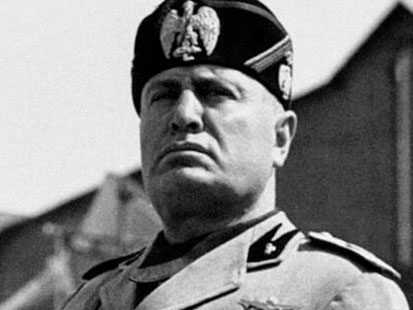
The companies surveyed in 1924 were 5,719 with 885,393 members and despite the decrease it was limited.
In 1925 the Italian Federation of Mutual Aid Societies of socialist inspiration was abolished and the assets were confiscated for the benefit of the trade union associations.
The law of December 30 established the Ente Nazionale Fascista della Cooperazione. The Ministry for National Economy was tasked with carrying out inspections on the functioning of mutual aid societies.
On 21 April the Labour Charter was issued, proposed for the transformation of the union into a public institution, the equal role between worker and employer, the intervention of the State in employment relations and economic activities . The social reforms were started on these cornerstones: social security institutions, means of support for old age, unemployment benefits, guarantees in case of illness, etc.
In 1925 the Italian Federation of Mutual Aid Societies of socialist inspiration was abolished and the assets were confiscated for the benefit of the trade union associations.
The law of December 30 established the Ente Nazionale Fascista della Cooperazione. The Ministry for National Economy was tasked with carrying out inspections on the functioning of mutual aid societies.
On 21 April the Labour Charter was issued, proposed for the transformation of the union into a public institution, the equal role between worker and employer, the intervention of the State in employment relations and economic activities . The social reforms were started on these cornerstones: social security institutions, means of support for old age, unemployment benefits, guarantees in case of illness, etc.
1930 - 1939
Fascist Federation of Mutualities
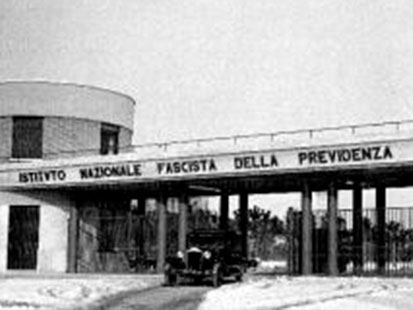
At the congress of mutual societies, the fascist federation of mutual societies came to life. Through the Opera Nazionale del Dopolavoro it was possible to receive and administer contributions, donations and bequests, effectively replacing the functions carried out until then by mutual aid societies.
- In 1933 the National Institute for Insurance against Accidents at Work (INAIL) was born.
- In 1934 the birth of joint mutual societies of a cooperative nature was made official, represented in equal measure by workers and employers.
- In 1935 the National Federation of Industry Mutual Sickness Funds was born. It remained active until 1943. Furthermore, the National Institute of Social Security (INPS) was founded.
- The companies surveyed were almost halved in fact, they were only 3,448 with 404,603 members.
On 1 September 1939, Nazi Germany attacked Poland: the Second World War began.
- In 1933 the National Institute for Insurance against Accidents at Work (INAIL) was born.
- In 1934 the birth of joint mutual societies of a cooperative nature was made official, represented in equal measure by workers and employers.
- In 1935 the National Federation of Industry Mutual Sickness Funds was born. It remained active until 1943. Furthermore, the National Institute of Social Security (INPS) was founded.
- The companies surveyed were almost halved in fact, they were only 3,448 with 404,603 members.
On 1 September 1939, Nazi Germany attacked Poland: the Second World War began.
1943 - 1954
Birth of the Republic
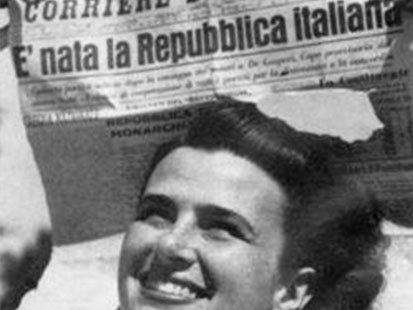
The National Institute for Illness Insurance (INAM) was born in 1943 with the aim of unifying the protection of workers of the different production sectors.
On 12 July 1945 the High Commissioner for Hygiene and Health was established ( ACIS), and was charged with the "protection of public health" and the coordination and technical supervision of the health organizations and bodies that have the aim of preventing and fight social ills.
On 2 June 1946 a referendum sanctioned the end of the monarchy and the birth of the Republic. On January 1st the new constitution came into force.
The first RAI television broadcasts began on January 3 and starting from the fifties the economy and society underwent a profound change. Italy was preparing to become, from an agricultural country, one of the seven great industrial powers of the world.
On 12 July 1945 the High Commissioner for Hygiene and Health was established ( ACIS), and was charged with the "protection of public health" and the coordination and technical supervision of the health organizations and bodies that have the aim of preventing and fight social ills.
On 2 June 1946 a referendum sanctioned the end of the monarchy and the birth of the Republic. On January 1st the new constitution came into force.
The first RAI television broadcasts began on January 3 and starting from the fifties the economy and society underwent a profound change. Italy was preparing to become, from an agricultural country, one of the seven great industrial powers of the world.
1958 - 1992
Ministry of Health
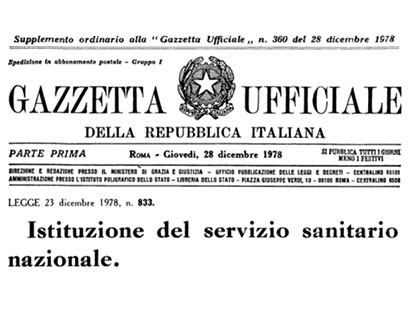
The Ministry of Health was established which took over the competences of ACIS in health matters and which set itself the objective of fully implementing the new principles introduced by the constitutional provisions.
Law n.833, of 1978, established the National Health Service (SSN) giving rise to a profound reorganization of Italian healthcare. The Republic affirmed the protection of health as a fundamental right of the individual and interest of the community, declaring the principles of universality, equality and fairness.
The Piedmont region, in 1990, issued the first law for the "Protection and promotion of the heritage and historical, social and cultural values of mutual aid societies."
Article 9 of Legislative Decree no. 502 provided for the establishment of supplementary health funds aimed at strengthening the provision of treatments and services not included in the LEA.
Law n.833, of 1978, established the National Health Service (SSN) giving rise to a profound reorganization of Italian healthcare. The Republic affirmed the protection of health as a fundamental right of the individual and interest of the community, declaring the principles of universality, equality and fairness.
The Piedmont region, in 1990, issued the first law for the "Protection and promotion of the heritage and historical, social and cultural values of mutual aid societies."
Article 9 of Legislative Decree no. 502 provided for the establishment of supplementary health funds aimed at strengthening the provision of treatments and services not included in the LEA.
1996 - 1999
Non-profit sector
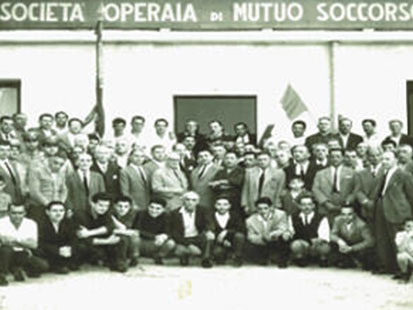
Romano Prodi was sworn in as Prime Minister.
TheLegislative Decree. n 460 reorganized the no-profit sector on a fiscal level, confirming the non-commercial nature of mutual aid societies.
In 1999, Legislative Decree no. 229 - the so-called Bindi Decree - gave rise to the third reform of the NHS. The legislator's intentions included the rationalization of health spending which leads to the recognition for the Regions of new and broader faculties in the planning and management of health services.
The art. 3 of Legislative Decree no. 229 introduced the Supplementary Health Funds DOC. Mutual aid societies were included among the bodies that could manage these funds.
TheLegislative Decree. n 460 reorganized the no-profit sector on a fiscal level, confirming the non-commercial nature of mutual aid societies.
In 1999, Legislative Decree no. 229 - the so-called Bindi Decree - gave rise to the third reform of the NHS. The legislator's intentions included the rationalization of health spending which leads to the recognition for the Regions of new and broader faculties in the planning and management of health services.
The art. 3 of Legislative Decree no. 229 introduced the Supplementary Health Funds DOC. Mutual aid societies were included among the bodies that could manage these funds.
2001 - 2012
Silvio Berlusconi
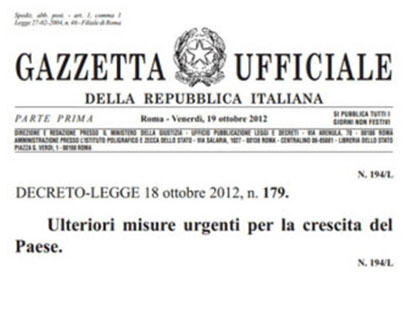
Silvio Berlusconi was elected Prime Minister for the second time, remaining in office until May 2006.
2006 - 146 mutual aid societies were members of the Italian Federation of Voluntary Integrative Mutuality (FIMIV).
2008 - The Decree of the Minister of Health of 31 March established, within the Ministry of Health, the Registry of Health Funds (Turkish decree).
2009 - The Turco and Sacconi decrees demonstrate the legislator's desire to give a correct orientation to private spending, facilitating supplementary forms of assistance also through tax benefits. The Ministerial Decree of 27 October (Sacconi Decree) defined the procedures and methods of operation of the Registry of Health Funds.
2012 - The Growth Decree recognized mutual aid societies as having a decisive role in national welfare, also in light of the values of which mutualism is historically bearer compared to other subjects active in the sector.
2006 - 146 mutual aid societies were members of the Italian Federation of Voluntary Integrative Mutuality (FIMIV).
2008 - The Decree of the Minister of Health of 31 March established, within the Ministry of Health, the Registry of Health Funds (Turkish decree).
2009 - The Turco and Sacconi decrees demonstrate the legislator's desire to give a correct orientation to private spending, facilitating supplementary forms of assistance also through tax benefits. The Ministerial Decree of 27 October (Sacconi Decree) defined the procedures and methods of operation of the Registry of Health Funds.
2012 - The Growth Decree recognized mutual aid societies as having a decisive role in national welfare, also in light of the values of which mutualism is historically bearer compared to other subjects active in the sector.
1844
Mazzini

The dissolution provision of the ancient guilds of arts and crafts was issued, which gave the impetus to the dissemination of the phenomenon of mutualism.
Mazzini incited the Italians to unite "among people of the same trade to give life to courageous cooperatives", recommending to make sure and " tax themselves even a modest amount to create welfare funds and assistance".
Starting from 1848 there was a rapid expansion of mutual aid societies in the Kingdom of Savoy (Liguria, Piedmont and Sardinia) but with different territorial characteristics.
1848
The Albertine Statute

With industrialization the "factory system" spread in which masses of workers were forced into a difficult condition of social and civil life.
Article 32 of the Albertino statute meant an important step towards freedom of association, recognizing "the right to assemble peacefully and conforming to the laws that can regulate its exercise of public affairs".
This was a decisive step for the defense of health as it established that "the Republic protects health as a fundamental right of the individual and interest of the community, and guarantees free treatment to destitute".
Article 32 of the Albertino statute meant an important step towards freedom of association, recognizing "the right to assemble peacefully and conforming to the laws that can regulate its exercise of public affairs".
This was a decisive step for the defense of health as it established that "the Republic protects health as a fundamental right of the individual and interest of the community, and guarantees free treatment to destitute".
1861 - 1870
Vittorio Emanuele II

The first convocation of the Italian Parliament took place on 18 February. On March 17, Vittorio Emanuele II was proclaimed king of Italy. The liberal political forces, led by Garibaldi and Mazzini, strongly believed in a unitary and free state believing that its realization could not ignore overcoming the social inequity that affected the working class and supporting the approach of the proletariat to the bourgeois class without class struggles.
Mutualism became increasingly the subject of political interest. The Artisan Brotherhood immediately established itself as the most important "workers" association of the new State, both in terms of number of members and political ideas.
In the first statistic carried out by the ministerial offices, 443 mutual aid societies were registered for a total of 121,635 members.
1870 With the capture of Rome, Lazio is annexed to the Kingdom and the State of the Church is incorporated.
Mutualism became increasingly the subject of political interest. The Artisan Brotherhood immediately established itself as the most important "workers" association of the new State, both in terms of number of members and political ideas.
In the first statistic carried out by the ministerial offices, 443 mutual aid societies were registered for a total of 121,635 members.
1870 With the capture of Rome, Lazio is annexed to the Kingdom and the State of the Church is incorporated.
1871 - 1876
Resistance Society

The XII National Congress in Rome saw little participation from mutualistic associations, particularly those of moderate or internationalist inspiration. During the congress the Brotherhood Pact was approved which, according to Mazzini, was to replace the premise for the attack on the monarchical state, but which in fact sanctioned the rupture between the workers' movement and Mazzini.
In 1874 the congress of Mutual Aid Societies of Rome proposed the establishment of the Resistance Societies, structured organizations of mutual aid societies capable of assisting >, defend and promote the workers' struggle.
The mutual aid societies began to abstain from participation in political life, concentrating only on the social functions and the management of the assets of which they were custodians.
In 1874 the congress of Mutual Aid Societies of Rome proposed the establishment of the Resistance Societies, structured organizations of mutual aid societies capable of assisting >, defend and promote the workers' struggle.
The mutual aid societies began to abstain from participation in political life, concentrating only on the social functions and the management of the assets of which they were custodians.
1882 - 1885
New Commercial Code

In this period many mutual aid societies transformed themselves into a cooperative, developing in the credit sector in an autonomous organization, to increase and educate workers to save.
With the New Commercial Code they were legalized and transformed into cooperative banks for deposits and loans. They represented an instrument of economic emancipation of workers. The first forms of cooperation for consumption and construction of public housing spread.
With the New Commercial Code they were legalized and transformed into cooperative banks for deposits and loans. They represented an instrument of economic emancipation of workers. The first forms of cooperation for consumption and construction of public housing spread.
1886 - 1892
Berti Law

With the Royal Decree the principle of freedom of association was established, Italian legislation had remained extremely vague on the matter, leaving ample freedom of self-regulation to individual mutual aid societies.
The Berti law of 1896 was the first legislative intervention in the field of mutual aid.
The companies were granted the possibility of acquiring legal personality. Furthermore, the essential conditions which he would have to comply with were dictated:
- helping members as an aim
- saving as a means
- mutuality as a bond
The Berti law of 1896 was the first legislative intervention in the field of mutual aid.
The companies were granted the possibility of acquiring legal personality. Furthermore, the essential conditions which he would have to comply with were dictated:
- helping members as an aim
- saving as a means
- mutuality as a bond
1897 - 1900
Provident Fund

Mutual aid companies were invited to enroll their members in the National Welfare Fund, effectively making membership compulsory for some types of workers.
In 1898 the 17 March law established compulsory insurance against accidents at work for industrial workers. With the law of April 20th the National Welfare Fund for the old age and invalidity of workers was born with an endowment of 10,000,000 lire, it was based on voluntary membership with free contributions and few advantages offered.
In 1900, between 29 and 30 June, the National Social Security Congress between mutual aid societies was held in Milan. Under the impetus of the League of Cooperatives, the theme of a common organization capable of promoting the world's requests for mutual aid was tackled.
On September 5, the Italian Federation of Mutual Aid Societies was born.
In 1898 the 17 March law established compulsory insurance against accidents at work for industrial workers. With the law of April 20th the National Welfare Fund for the old age and invalidity of workers was born with an endowment of 10,000,000 lire, it was based on voluntary membership with free contributions and few advantages offered.
In 1900, between 29 and 30 June, the National Social Security Congress between mutual aid societies was held in Milan. Under the impetus of the League of Cooperatives, the theme of a common organization capable of promoting the world's requests for mutual aid was tackled.
On September 5, the Italian Federation of Mutual Aid Societies was born.
1901 - 1919
Giovanni Giolitti

In 1904, the mutual aid societies registered were 6535, a slight decrease compared to the previous revelation.
In 1912, among the measures undertaken by Giolitti in those years (Universal Suffrage and war in Turkey) there was also the foundation of the National Insurance Institute.
At the outbreak of the First World War, the workers' societies were involved in the work of assistance to citizens, soldiers and their families. Most mutual aid societies exhausted their reserve funds also due to the decrease in the number of members.
At the end of the world war there was a strong economic crisis, 1800 strikes were registered and disability and old age insurance became mandatory. With the equal contributions of entrepreneurs, workers and the assistance of the State, welfare was extended to the entire population.
In 1912, among the measures undertaken by Giolitti in those years (Universal Suffrage and war in Turkey) there was also the foundation of the National Insurance Institute.
At the outbreak of the First World War, the workers' societies were involved in the work of assistance to citizens, soldiers and their families. Most mutual aid societies exhausted their reserve funds also due to the decrease in the number of members.
At the end of the world war there was a strong economic crisis, 1800 strikes were registered and disability and old age insurance became mandatory. With the equal contributions of entrepreneurs, workers and the assistance of the State, welfare was extended to the entire population.
1922 - 1929
Benito Mussolini

The companies surveyed in 1924 were 5,719 with 885,393 members and despite the decrease it was limited.
In 1925 the Italian Federation of Mutual Aid Societies of socialist inspiration was abolished and the assets were confiscated for the benefit of the trade union associations.
The law of December 30 established the Ente Nazionale Fascista della Cooperazione. The Ministry for National Economy was tasked with carrying out inspections on the functioning of mutual aid societies.
On 21 April the Labour Charter was issued, proposed for the transformation of the union into a public institution, the equal role between worker and employer, the intervention of the State in employment relations and economic activities . The social reforms were started on these cornerstones: social security institutions, means of support for old age, unemployment benefits, guarantees in case of illness, etc.
In 1925 the Italian Federation of Mutual Aid Societies of socialist inspiration was abolished and the assets were confiscated for the benefit of the trade union associations.
The law of December 30 established the Ente Nazionale Fascista della Cooperazione. The Ministry for National Economy was tasked with carrying out inspections on the functioning of mutual aid societies.
On 21 April the Labour Charter was issued, proposed for the transformation of the union into a public institution, the equal role between worker and employer, the intervention of the State in employment relations and economic activities . The social reforms were started on these cornerstones: social security institutions, means of support for old age, unemployment benefits, guarantees in case of illness, etc.
1930 - 1939
Fascist Federation of Mutualities

At the congress of mutual societies, the fascist federation of mutual societies came to life. Through the Opera Nazionale del Dopolavoro it was possible to receive and administer contributions, donations and bequests, effectively replacing the functions carried out until then by mutual aid societies.
- In 1933 the National Institute for Insurance against Accidents at Work (INAIL) was born.
- In 1934 the birth of joint mutual societies of a cooperative nature was made official, represented in equal measure by workers and employers.
- In 1935 the National Federation of Industry Mutual Sickness Funds was born. It remained active until 1943. Furthermore, the National Institute of Social Security (INPS) was founded.
- The companies surveyed were almost halved in fact, they were only 3,448 with 404,603 members.
On 1 September 1939, Nazi Germany attacked Poland: the Second World War began.
- In 1933 the National Institute for Insurance against Accidents at Work (INAIL) was born.
- In 1934 the birth of joint mutual societies of a cooperative nature was made official, represented in equal measure by workers and employers.
- In 1935 the National Federation of Industry Mutual Sickness Funds was born. It remained active until 1943. Furthermore, the National Institute of Social Security (INPS) was founded.
- The companies surveyed were almost halved in fact, they were only 3,448 with 404,603 members.
On 1 September 1939, Nazi Germany attacked Poland: the Second World War began.
1943 - 1954
Birth of the Republic

The National Institute for Illness Insurance (INAM) was born in 1943 with the aim of unifying the protection of workers of the different production sectors.
On 12 July 1945 the High Commissioner for Hygiene and Health was established ( ACIS), and was charged with the "protection of public health" and the coordination and technical supervision of the health organizations and bodies that have the aim of preventing and fight social ills.
On 2 June 1946 a referendum sanctioned the end of the monarchy and the birth of the Republic. On January 1st the new constitution came into force.
The first RAI television broadcasts began on January 3 and starting from the fifties the economy and society underwent a profound change. Italy was preparing to become, from an agricultural country, one of the seven great industrial powers of the world.
On 12 July 1945 the High Commissioner for Hygiene and Health was established ( ACIS), and was charged with the "protection of public health" and the coordination and technical supervision of the health organizations and bodies that have the aim of preventing and fight social ills.
On 2 June 1946 a referendum sanctioned the end of the monarchy and the birth of the Republic. On January 1st the new constitution came into force.
The first RAI television broadcasts began on January 3 and starting from the fifties the economy and society underwent a profound change. Italy was preparing to become, from an agricultural country, one of the seven great industrial powers of the world.
1958 - 1992
Ministry of Health

The Ministry of Health was established which took over the competences of ACIS in health matters and which set itself the objective of fully implementing the new principles introduced by the constitutional provisions.
Law n.833, of 1978, established the National Health Service (SSN) giving rise to a profound reorganization of Italian healthcare. The Republic affirmed the protection of health as a fundamental right of the individual and interest of the community, declaring the principles of universality, equality and fairness.
The Piedmont region, in 1990, issued the first law for the "Protection and promotion of the heritage and historical, social and cultural values of mutual aid societies."
Article 9 of Legislative Decree no. 502 provided for the establishment of supplementary health funds aimed at strengthening the provision of treatments and services not included in the LEA.
Law n.833, of 1978, established the National Health Service (SSN) giving rise to a profound reorganization of Italian healthcare. The Republic affirmed the protection of health as a fundamental right of the individual and interest of the community, declaring the principles of universality, equality and fairness.
The Piedmont region, in 1990, issued the first law for the "Protection and promotion of the heritage and historical, social and cultural values of mutual aid societies."
Article 9 of Legislative Decree no. 502 provided for the establishment of supplementary health funds aimed at strengthening the provision of treatments and services not included in the LEA.
1996 - 1999
Non-profit sector

Romano Prodi was sworn in as Prime Minister.
TheLegislative Decree. n 460 reorganized the no-profit sector on a fiscal level, confirming the non-commercial nature of mutual aid societies.
In 1999, Legislative Decree no. 229 - the so-called Bindi Decree - gave rise to the third reform of the NHS. The legislator's intentions included the rationalization of health spending which leads to the recognition for the Regions of new and broader faculties in the planning and management of health services.
The art. 3 of Legislative Decree no. 229 introduced the Supplementary Health Funds DOC. Mutual aid societies were included among the bodies that could manage these funds.
TheLegislative Decree. n 460 reorganized the no-profit sector on a fiscal level, confirming the non-commercial nature of mutual aid societies.
In 1999, Legislative Decree no. 229 - the so-called Bindi Decree - gave rise to the third reform of the NHS. The legislator's intentions included the rationalization of health spending which leads to the recognition for the Regions of new and broader faculties in the planning and management of health services.
The art. 3 of Legislative Decree no. 229 introduced the Supplementary Health Funds DOC. Mutual aid societies were included among the bodies that could manage these funds.
2001 - 2012
Silvio Berlusconi

Silvio Berlusconi was elected Prime Minister for the second time, remaining in office until May 2006.
2006 - 146 mutual aid societies were members of the Italian Federation of Voluntary Integrative Mutuality (FIMIV).
2008 - The Decree of the Minister of Health of 31 March established, within the Ministry of Health, the Registry of Health Funds (Turkish decree).
2009 - The Turco and Sacconi decrees demonstrate the legislator's desire to give a correct orientation to private spending, facilitating supplementary forms of assistance also through tax benefits. The Ministerial Decree of 27 October (Sacconi Decree) defined the procedures and methods of operation of the Registry of Health Funds.
2012 - The Growth Decree recognized mutual aid societies as having a decisive role in national welfare, also in light of the values of which mutualism is historically bearer compared to other subjects active in the sector.
2006 - 146 mutual aid societies were members of the Italian Federation of Voluntary Integrative Mutuality (FIMIV).
2008 - The Decree of the Minister of Health of 31 March established, within the Ministry of Health, the Registry of Health Funds (Turkish decree).
2009 - The Turco and Sacconi decrees demonstrate the legislator's desire to give a correct orientation to private spending, facilitating supplementary forms of assistance also through tax benefits. The Ministerial Decree of 27 October (Sacconi Decree) defined the procedures and methods of operation of the Registry of Health Funds.
2012 - The Growth Decree recognized mutual aid societies as having a decisive role in national welfare, also in light of the values of which mutualism is historically bearer compared to other subjects active in the sector.

The museum layout was designed to offer the visitor a complete and exhaustive picture of the history of mutual aid societies. The route opens with information panels that tell, in a chronological sequence, the phenomenon of mutualism. A narrative that follows in parallel the political events and the most significant characters of over two centuries of Italian history.
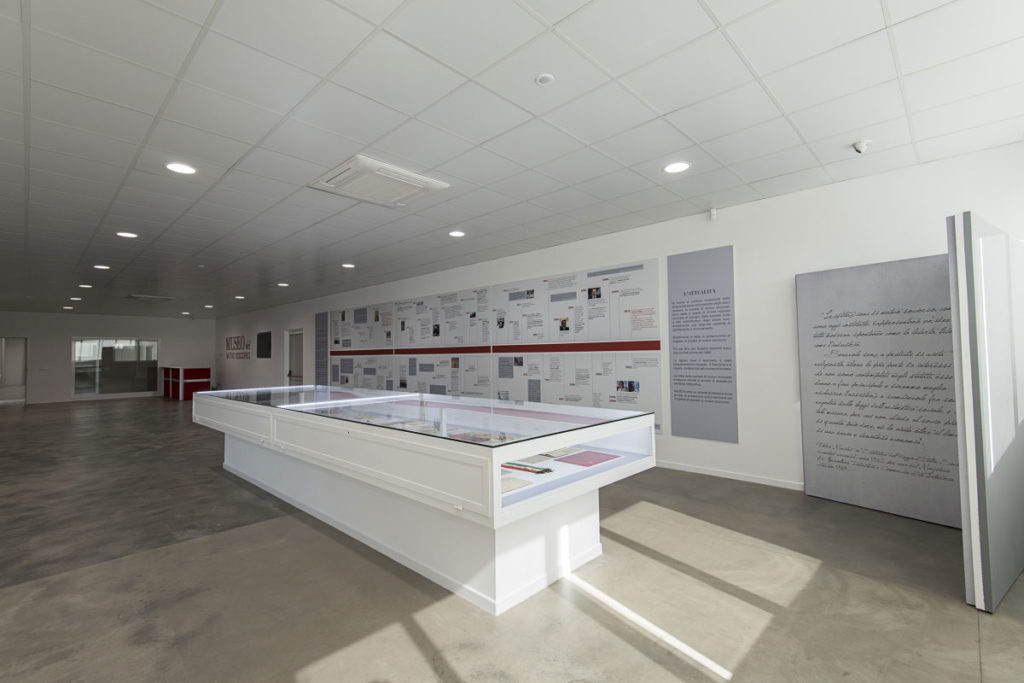
Our collection of objects and finds on the world of Mutuality
The collection includes a notable variety of documentary material: statutes, regulations, manuals, booklets that provide us with a cross-section of the institutional life of the associations. The assets of the Mutual Aid Museum are the property of Mutua MBA.


